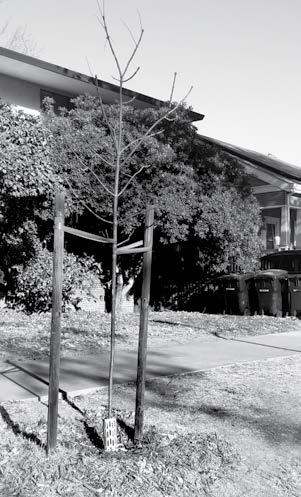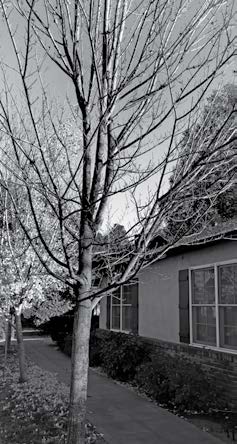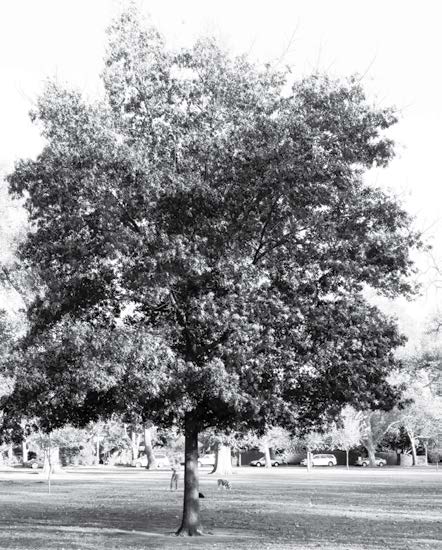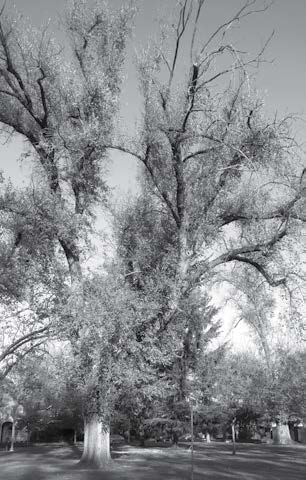While most deciduous trees have shed their leaves in preparation for the winter season, they still need some attention. Here’s a checklist for newly planted, young, established and mature trees. Now is the perfect time to plant a replacement for a tree you removed.
Newly planted trees (in past 12 months)

- If rainfall is steady, remove the earthen well from around the base to avoid standing water for long periods.
- Remove the ties on staked trees. If a winter storm causes the tree to lean, it can be straightened up by reinstalling the ties.
- Perform minor pruning by removing dead, broken, rubbing or crossing limbs. If there is more than one central leader, reduce one. But don’t remove more than 10% of the branches or it will cause excessive sprouting of new branches. No topping or stub cuts. Find pruning instructions at www.sactree.com/treecare.
Young trees (less than 10 years old)

- Check soil moisture. Stick a shovel in the ground under the outer tips of branches. If it goes in less than 6 inches and you aren’t hitting roots/ rocks, then give it a slow soak. Why? The winter season is when trees produce numerous roots because the soil doesn’t freeze.
- Has turf grown around the base? Trees grow better when there is a minimum of 3 feet turf-free radius around the trunk. Install some type of organic mulch in this area.
- If tree is still staked due to leaning, check with an arborist. There is a root development problem that needs to be addressed.
- Take a flat shovel and deep edge to a 6-inch depth along sidewalks, driveway and patio. Roots travel great distances and by severing the roots while small, you may avoid costly concrete repair 15 to 20 years later due to roots heaving the concrete.
- Inspect branching, raise up low limbs over any structures, driveway, street and sidewalk. Remove dead, broken or rubbing limbs. Remove no more than 10% of the branches. No topping or stub cuts.
Established trees (10-25 years old)

- Maintain a turf-free area around the base.
- Continue deep edging to a 6-inch depth with a flat shovel along sidewalks, driveway and patio. If you are doing this for the first time, excavate a trench and use pruning tools. If you are severing roots more than 2 inches in diameter, an arborist should inspect to ensure the stability or health of the tree has not been compromised.
- Look up in the canopy for hanging and/or split branches. Also inspect the branch unions for cracks.
- Have a professional arborist inspect to determine any required pruning.
Mature trees (25 years and older)

- If it is an evergreen or the tree is located in turf and there has been no measurable precipitation, then water.
- After every storm, inspect the canopy for any hanging, broken or split branches. Also check the branch unions for cracks. Binoculars are helpful to inspect tall trees. Check the area around the base for any soil heaving or copious amounts of soil on the concrete surface adjacent to the tree. These indicate excessive movement in the soil with the possibility of the tree blowing over. This requires a risk assessment by a professional arborist.
- Mushrooms or conks on the external surface of the tree’s base indicate that a professional arborist needs to do some investigative work.
Using this checklist with follow-up preventative maintenance will ensure the health and longevity of your trees.
When large limbs or trees fall onto the street or sidewalk during storms, call 311 or email 311@cityofsacramento.org. Permits are required for any work done on city trees or private protected trees.
For further information: http://www.cityofsacramento.org/Public-Works/Maintenance-Services/Trees/Permits-Ordinances
